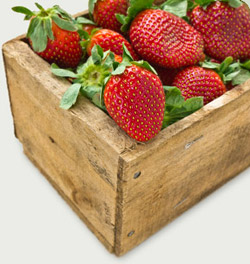
How to grow strawberries
Posted in Healthy Home & Garden on June 21, 2013. Last modified on April 21, 2019. Read disclaimer.
Strawberries are adaptable to most garden soils, but grow best with well-drained soil with a pH of 6.0 to 6.5. Incorporate organic material and form raised beds for best results. Select a site that has not previously been planted with strawberries, potatoes, tomatoes, peppers or eggplants within five years to reduce the chances of verticillium wilt, a fungal disease. Also try to avoid planting immediately after removing sod because grubs can feed on strawberry roots.
+ Free Shipping & Returns on Eligible Items.
(*Amazon's Top 100 list updated hourly.)
Varieties: The most reliable strawberry varieties are "Junebearers", which actually begin ripening in May and last for 3-5 weeks. Other types are "everbearing" and "day-neutral", which produce smaller crops in both spring and fall. It is not necessary to plant more than one variety for cross pollination, but cross pollination can result in better production. And by growing a variety of junebearing, everbearing and day-neutral strawberries, you can greatly extend your harvest season.
Planting: Strawberries are usually planted in March or April. Plant as soon as your plants arrive. Be sure to set the plants in the ground at the correct depth, at the middle of the crown, and to spread out the roots in the planting hole. Space plants 18 to 24 inches apart in the row, with rows about 3 feet apart. Plants need approximately 1" of water per week.
The first spring remove all flower buds from Junebearing types so the plant's energy will go into producing runners to fill in the bed. (For everbearing types, remove flower buds until July.) During the summer allow runners to grow until plant density is approximately four to six plants per square foot. After that, remove excess runners if needed.
University of Main Cooperative Extension has a wonderful series of videos on how to plant, grow, and renovate strawberries.
Fertilization: New plants can be fertilized one month after planting. Then fertilize in September when the plants are forming flower buds. Broadcast fertilizer when foliage is dry and brush it off the leaves. Do not fertilize in spring as it can result in soft berries and more disease problems.
Renovation: A strawberry bed can produce for 3 to 4 years before plants become weak and need to be replaced. If the plants are healthy, renovate immediately after harvest. Mow off leaves with a mower or string trimmer, being careful not to damage the crowns. Reduce the row width with a rototiller or hoe to a strip 12 to 18 inches wide. Thin plants to 6 inches apart. Fertilize and water.
Strawberries have a number of common insect pests and diseases to be watchful for.
Harvesting: Choose red ripe strawberries. They may deepen in color after they are picked, but they do not develop more flavor. Try to pick early in the day, before the fruit heats up in the sun. Do not wash berries until you are ready to proceed with freezing or making jam. Strawberries deteriorate quickly, so prepare the berries as soon after picking as possible.
Freezing: Two "no added sweetener" options for freezing strawberries are:
- Whole: Place cleaned strawberries on a cookie sheet and freeze until firm. Remove from cookie sheet and package in plastic bags or freezer cartons. Seal. Serve slightly frozen to help food hold its shape.
- Light Juice Syrup Pack: Combine 1/3 cup pineapple juice or 1/2 cup orange juice plus 1 teaspoon lemon juice, plus enough boiled water to equal 1 cup. Cool. Adjust quantities for the amount of syrup needed. It takes about 3/4 cup of syrup for 1 pint of packed fruit.
Bearing age, average yield and life span of strawberries:
| Fruit | Type | Bearing Age | Avg. Annual Yield per Plant | Sugg. # of Plants for Family of 4 | Life Expectancy |
|---|---|---|---|---|---|
| Strawberry | Junebearing | 2 years | 1/2 pounds | 50 | 3-4 years |
|
Everbearing |
1 year |
1/3 pounds |
50 |
2-3 years |
For more information see: Strawberries in the Home Garden at:
http://www.ces.ncsu.edu/hil/hil-8205.html
http://swain.ces.ncsu.edu/2013/04/strawberries-in-your-home-garden
http://www.ces.ncsu.edu/hil/pdf/hil-8205.pdf
Primary Source:
Back to Basics: Small Fruit for the Home Garden, Linda Blue, Agricultural Extension Agent, Buncombe County, NC
Your may also be interested in tips for growing Blackberries and Raspberries | Blueberries | Grapes | Strawberries

 How to prepare if you have pets and are going to have a baby
How to prepare if you have pets and are going to have a baby Tips for battling afternoon fatigue
Tips for battling afternoon fatigue Organic Gardening infographic
Organic Gardening infographic Tools for determining your risk of disease
Tools for determining your risk of disease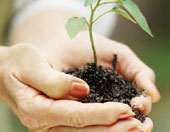 Getting a jumpstart on spring gardening
Getting a jumpstart on spring gardening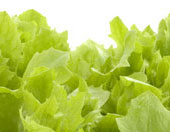 Fall gardening tips and tricks
Fall gardening tips and tricks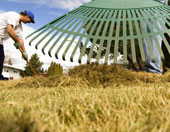 Composting kitchen and yard scraps
Composting kitchen and yard scraps How music and laughter can effect our health
How music and laughter can effect our health Simple to build, Do It Yourself standup desk
Simple to build, Do It Yourself standup desk Steps for keeping your eyesight healthy as you age
Steps for keeping your eyesight healthy as you age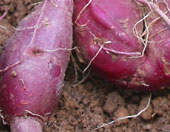 Guide to growing purple sweet potatoes
Guide to growing purple sweet potatoes What's radon in the home and why should I be concerned
What's radon in the home and why should I be concerned Simple and healthy smoothie recipes
Simple and healthy smoothie recipes What you can do to keep your Immune System strong
What you can do to keep your Immune System strong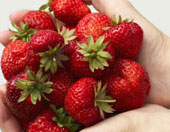 Gardener's guide to growing strawberries
Gardener's guide to growing strawberries Causes of stress and how to deal with it
Causes of stress and how to deal with it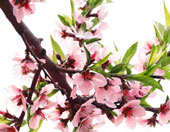 Poisonous plants in your home and garden
Poisonous plants in your home and garden